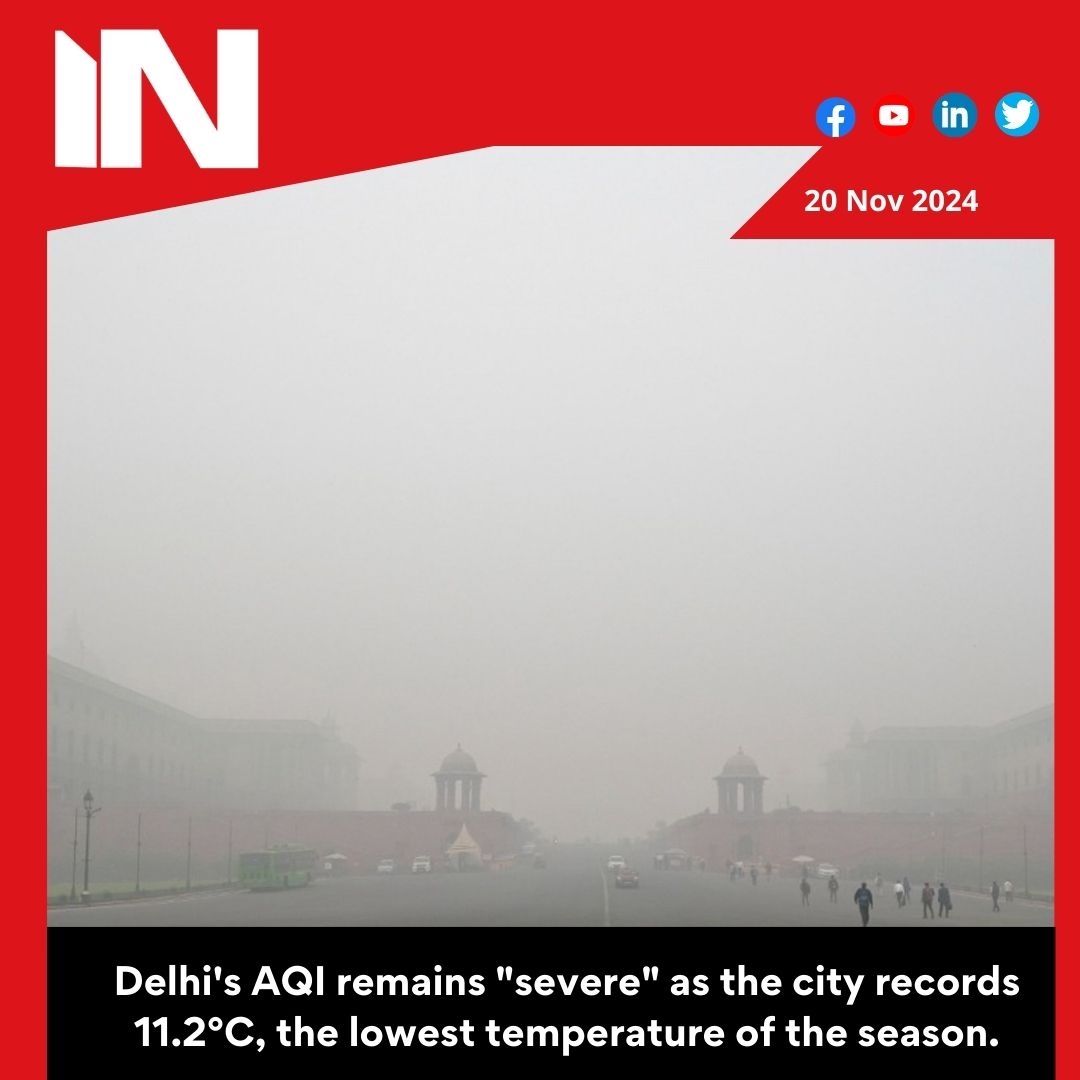Delhi’s 24-hour average quality was recorded at 424 (severe) at 9am on Wednesday, according to the Central Pollution Control Board.
Toxic pollutants continued to shroud Delhi in a thick blanket of smog as the air quality remained in the ‘severe’ range on Wednesday, though data showed a marginal improvement in the overall air quality index (AQI) even as the city’s minimum temperature touched a season low of 11.2°C, a degree below normal. It was 12.3°C a day earlier.
Delhi’s 24-hour average quality was recorded at 424 (severe) at 9am on Wednesday, according to the Central Pollution Control Board (CPCB). It was 460 (severe) at 4pm on Tuesday.
The AQI had touched 494 at 4pm on Monday, making it the joint-second highest AQI recorded ever in the capital. Delhi had recorded the same average AQI on November 3, 2019, while the all-time high of 497 was noted on November 6, 2016.
Also Read | 50% Delhi government employees to work from home due to air pollution, announces Gopal Rai
Meteorological experts said fog was weakening in the region, allowing both dispersion to increase and the sunlight to penetrate through to the surface. Shallow fog was reported on Wednesday, with the lowest visibility of 500 metres recorded at Safdarjung, followed by 600 metres at Palam.
“Once again, shallow fog was reported from the capital. The thick layer of fog over northwest India has weakened,” said an IMD official. The minimum visibility on Tuesday was 600 metres at Safdarjung and 1,000 at Palam.
Though no diversions were reported at Delhi’s Indira Gandhi International airport on Wednesday, flight tracking website Flightradar24 showed 37 flights were delayed today and six had been cancelled. Northern Railways, meanwhile, reported that 13 trains were running late due to fog.
Also Read | Understanding AQI, and if it precisely depicts worst days
If AQI persists in this range, this could be Delhi’s seventh severe air day this winter season. The national capital’s AQI first turned severe this season on November 13. Severe pollution has persisted in the region barring November 15, when the AQI went down briefly to very poor.
The CPCB classifies AQI between 0-50 as “good”, between 51 and 100 as “satisfactory”, between 101 and 200 as “moderate”, between 201 and 300 as “poor”, between 301 and 400 as “very poor”, and over 400 as “severe”.
CPCB data showed that out of the 38 operational stations, 31 were in ‘severe’ category, including Wazirpur (467) and Mundka (465). Six were in very poor and one – Lodhi Road (294) – was in ‘poor’.
Delhi continues to face a ‘severe’ air quality index (AQI) as the city recorded its season’s lowest temperature at 11.2°C. The ongoing cold wave has brought chilly weather, but the heavy pollution remains a serious concern for residents. The air quality is far from safe, with pollution levels in the ‘severe’ category, causing discomfort and potential health risks, particularly for those with respiratory issues.
Authorities have urged people to stay indoors as much as possible and take precautions such as wearing masks and using air purifiers. The city’s AQI has been impacted by a combination of factors, including low wind speeds, vehicular emissions, and construction activities, all of which contribute to the high pollution levels.
Despite the cold temperatures, the hazardous air quality is a reminder of the ongoing environmental challenges the city faces, especially during the winter months. The severe AQI poses significant health risks, aggravation of pre-existing conditions.
#DelhiAQI #SevereAirQuality #DelhiWeather #Pollution #WinterChill #AirPollution #HealthRisks #StaySafe #DelhiAirQuality #ColdWave
Group Media Publications
Entertainment News Platforms – anyflix.in
Construction Infrastructure and Mining News Platform – https://cimreviews.com/
General News Platform – https://ihtlive.com/


 Ranbir Kapoor1 month ago
Ranbir Kapoor1 month ago
 Mahakumbh1 month ago
Mahakumbh1 month ago.jpg)
.jpg) Bollywood3 weeks ago
Bollywood3 weeks ago
 American Dream3 weeks ago
American Dream3 weeks ago
 Sunny Leone1 month ago
Sunny Leone1 month ago
 Parineeti Chopra1 month ago
Parineeti Chopra1 month ago
 SSC Exam Calendar 20253 weeks ago
SSC Exam Calendar 20253 weeks ago
 Ajith Kumar4 weeks ago
Ajith Kumar4 weeks ago







.1.jpg)












